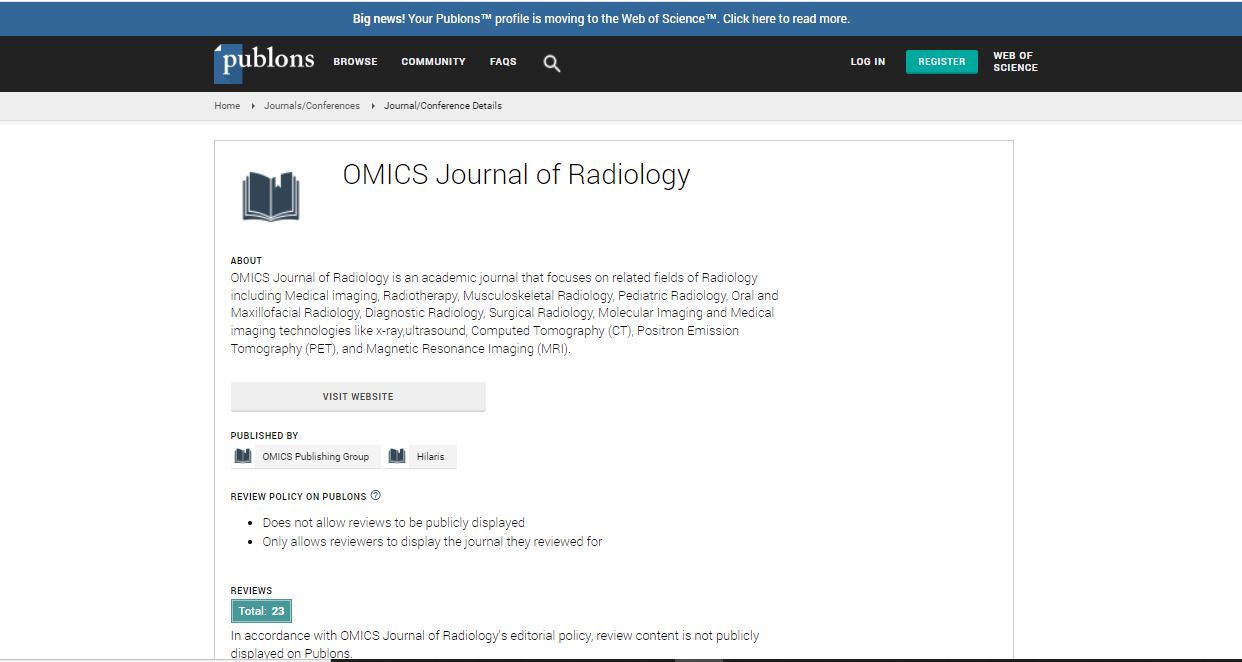Our Group organises 3000+ Global Conferenceseries Events every year across USA, Europe & Asia with support from 1000 more scientific Societies and Publishes 700+ Open Access Journals which contains over 50000 eminent personalities, reputed scientists as editorial board members.
Open Access Journals gaining more Readers and Citations
700 Journals and 15,000,000 Readers Each Journal is getting 25,000+ Readers
Google Scholar citation report
Citations : 551
Journal of Radiology received 551 citations as per Google Scholar report
Journal of Radiology peer review process verified at publons
Indexed In
- Index Copernicus
- Google Scholar
- Open J Gate
- Genamics JournalSeek
- ResearchBible
- Electronic Journals Library
- RefSeek
- Hamdard University
- EBSCO A-Z
- OCLC- WorldCat
- SWB online catalog
- Virtual Library of Biology (vifabio)
- Publons
- Geneva Foundation for Medical Education and Research
- ICMJE
Useful Links
Share This Page
Visibility of mandibular canal on panoramic radiograph after bilateral sagittal split osteotomy (BSSO)
3rd International Conference on Radiology and Imaging
Jimoh O Agbaje
Katholieke University Leuven, Belgium
ScientificTracks Abstracts: OMICS J Radiol
Abstract
This study aimed to assess the visibility of the mandibular canal (MC) on panoramic radiographs after BSSO, and to investigate what factors affect this MC visibility. We assessed MC visibility on panoramic radiographs of 200 BSSO patients. Images were acquired preoperatively (T0), immediately postoperatively (T1), six months postoperatively (T2), and one year postoperatively (T3), from three different predetermined regions of the mandible: the angle (Angle), distally to the second molar (M2), and mesially to the first molar (M1). All analyses were performed using SAS version 9.22. The visibility of the MC was registered preoperatively in over 96% (387/400) of the measurements at the angle of the mandible, 79% (317/400) at M2, and less than 63% (251/400) at M1. MC visibility decreased immediately after the operation and increased thereafter. Region of the mandible (P ΓΆΒ?Β¤ 0.0001), plate removal (P ΓΆΒ?Β¤ 0.0001), time of assessment (P ΓΆΒ?Β¤ 0.0001), and age (P = 0.0034) were important predictors of whether MC would be radiographically visible. The visibility of the MC decreased immediately after BSSO, especially at the operation site (M2 and M1), while maximum MC visibility was achieved at twelve months postoperatively in our series. Since MC was not visible at the operation site after BSSO for 50% of the subjects, it may be necessary to use additional visualization modalities for postoperative patient assessment in this region.Biography
Agbaje has completed his PhD in 2013 from Katholieke University Leuven. He is an FWO postdoctoral fellow at the same University. He has published more than 30 papers in reputed journals and has been serving as an editorial board member of repute.
Email: joagbaje@gmail.com

 Spanish
Spanish  Chinese
Chinese  Russian
Russian  German
German  French
French  Japanese
Japanese  Portuguese
Portuguese  Hindi
Hindi 
